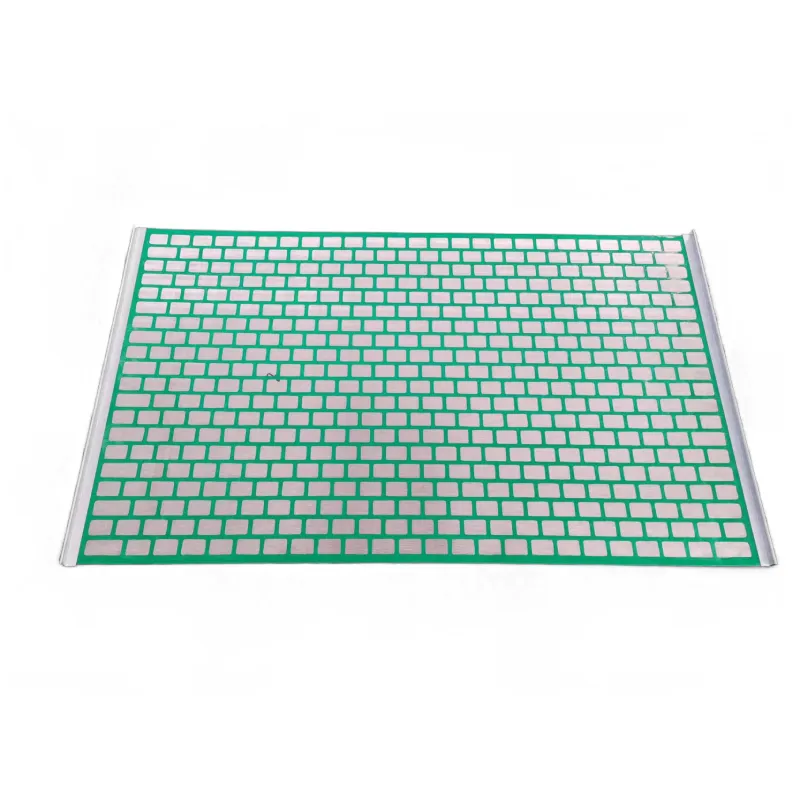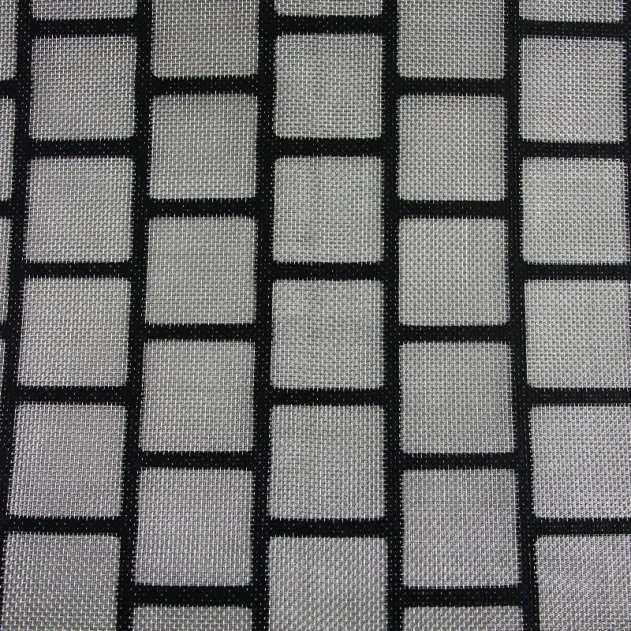- Industrial zone, South of Anping Town, Hengshui, Hebei, China.
- sales@hfpetromesh.com
- +86-18931809706
 Afrikaans
Afrikaans  Albanian
Albanian  Amharic
Amharic  Arabic
Arabic  Armenian
Armenian  Azerbaijani
Azerbaijani  Basque
Basque  Belarusian
Belarusian  Bengali
Bengali  Bosnian
Bosnian  Bulgarian
Bulgarian  Catalan
Catalan  Cebuano
Cebuano  Corsican
Corsican  Croatian
Croatian  Czech
Czech  Danish
Danish  Dutch
Dutch  English
English  Esperanto
Esperanto  Estonian
Estonian  Finnish
Finnish  French
French  Frisian
Frisian  Galician
Galician  Georgian
Georgian  German
German  Greek
Greek  Gujarati
Gujarati  Haitian Creole
Haitian Creole  hausa
hausa  hawaiian
hawaiian  Hebrew
Hebrew  Hindi
Hindi  Miao
Miao  Hungarian
Hungarian  Icelandic
Icelandic  igbo
igbo  Indonesian
Indonesian  irish
irish  Italian
Italian  Japanese
Japanese  Javanese
Javanese  Kannada
Kannada  kazakh
kazakh  Khmer
Khmer  Rwandese
Rwandese  Korean
Korean  Kurdish
Kurdish  Kyrgyz
Kyrgyz  Lao
Lao  Latin
Latin  Latvian
Latvian  Lithuanian
Lithuanian  Luxembourgish
Luxembourgish  Macedonian
Macedonian  Malgashi
Malgashi  Malay
Malay  Malayalam
Malayalam  Maltese
Maltese  Maori
Maori  Marathi
Marathi  Mongolian
Mongolian  Myanmar
Myanmar  Nepali
Nepali  Norwegian
Norwegian  Norwegian
Norwegian  Occitan
Occitan  Pashto
Pashto  Persian
Persian  Polish
Polish  Portuguese
Portuguese  Punjabi
Punjabi  Romanian
Romanian  Russian
Russian  Samoan
Samoan  Scottish Gaelic
Scottish Gaelic  Serbian
Serbian  Sesotho
Sesotho  Shona
Shona  Sindhi
Sindhi  Sinhala
Sinhala  Slovak
Slovak  Slovenian
Slovenian  Somali
Somali  Spanish
Spanish  Sundanese
Sundanese  Swahili
Swahili  Swedish
Swedish  Tagalog
Tagalog  Tajik
Tajik  Tamil
Tamil  Tatar
Tatar  Telugu
Telugu  Thai
Thai  Turkish
Turkish  Turkmen
Turkmen  Ukrainian
Ukrainian  Urdu
Urdu  Uighur
Uighur  Uzbek
Uzbek  Vietnamese
Vietnamese  Welsh
Welsh  Bantu
Bantu  Yiddish
Yiddish  Yoruba
Yoruba  Zulu
Zulu
- Afrikaans
- Albanian
- Amharic
- Arabic
- Armenian
- Azerbaijani
- Basque
- Belarusian
- Bengali
- Bosnian
- Bulgarian
- Catalan
- Cebuano
- Corsican
- Croatian
- Czech
- Danish
- Dutch
- English
- Esperanto
- Estonian
- Finnish
- French
- Frisian
- Galician
- Georgian
- German
- Greek
- Gujarati
- Haitian Creole
- hausa
- hawaiian
- Hebrew
- Hindi
- Miao
- Hungarian
- Icelandic
- igbo
- Indonesian
- irish
- Italian
- Japanese
- Javanese
- Kannada
- kazakh
- Khmer
- Rwandese
- Korean
- Kurdish
- Kyrgyz
- Lao
- Latin
- Latvian
- Lithuanian
- Luxembourgish
- Macedonian
- Malgashi
- Malay
- Malayalam
- Maltese
- Maori
- Marathi
- Mongolian
- Myanmar
- Nepali
- Norwegian
- Norwegian
- Occitan
- Pashto
- Persian
- Polish
- Portuguese
- Punjabi
- Romanian
- Russian
- Samoan
- Scottish Gaelic
- Serbian
- Sesotho
- Shona
- Sindhi
- Sinhala
- Slovak
- Slovenian
- Somali
- Spanish
- Sundanese
- Swahili
- Swedish
- Tagalog
- Tajik
- Tamil
- Tatar
- Telugu
- Thai
- Turkish
- Turkmen
- Ukrainian
- Urdu
- Uighur
- Uzbek
- Vietnamese
- Welsh
- Bantu
- Yiddish
- Yoruba
- Zulu
Best Grating Price Affordable Stainless Steel Bar & Steel Grating per Square Meter
- Introduction to grating price
and its importance in industrial applications - In-depth overview of stainless steel and steel grating pricing structure
- Analysis of technical advantages influencing pricing decisions
- Manufacturer comparison with cost and value considerations
- Customization options and their impact on grating costs
- Application cases demonstrating return on investment
- Conclusion highlighting optimal choices regarding grating price

(grating price)
Understanding Grating Price Dynamics in Modern Industries
In the realm of flooring and platform structures, the term grating price is pivotal for procurement teams, engineers, and business owners. A variety of sectors, including oil and gas, chemical processing, mining, water treatment, and architecture, rely on high-strength grating solutions for both safety and durability. The role of cost planning cannot be overstated, as current market trends indicate that material expenditure often constitutes up to 35% of industrial project budgets.
A recent industry survey encompassing over 300 global projects revealed that over 62% retrospectively identified overspending on grating due to underestimating specification requirements or failing to account for lifecycle costs. By dissecting grating pricing models, decision-makers can optimize long-term value, select apt product grades, and integrate quality with cost-efficiency.
Stainless Steel vs. Steel Grating Pricing Structure
The main categories influencing stainless steel bar grating price and steel grating price per square meter are material grade, surface finish, and load-bearing specifications. Stainless steel grating, typically made from 304 or 316 alloys, offers outstanding corrosion resistance and is preferred in aggressive environments such as chemical plants, food production, and offshore platforms. In a comparison driven by price per square meter, mild and galvanized steel grating provide a more budget-oriented solution but with trade-offs in corrosion resistance and maintenance demands.
Large-scale procurement data from 2023 revealed average market prices:
- Stainless steel grating (304 grade): $85–$120/m2
- Stainless steel grating (316 grade): $95–$140/m2
- Carbon steel (galvanized): $32–$50/m2
- Carbon steel (plain): $28–$40/m2
The significant price differential is directly tied to alloy composition, corrosion characteristics, and expected in-situ lifespan. When lifetime maintenance costs are factored in, the initial grating price can be offset by far lower long-term replacement and repair expenses.
Technical Advantages Influencing Grating Price Decisions
Engineering factors have a pronounced impact on ss grating price variation. Custom bar thickness, mesh spacing, and manufacturing technique (welded vs. press-locked) are the leading determinants. For example, specialty load-bearing requirements may necessitate heavy-duty grating with bar thickness exceeding 8 mm or the incorporation of double-load bars for forklift traffic. Such technical enhancements inflate raw material usage and specialized processing time, generating proportional increases in cost.
Surface treatments such as anti-slip serations, powder coating, or high-polish finishes further influence the price structure. It is also notable that innovations in grating design—such as modular snap-on panels—can generate savings in installation labor, albeit often at a premium material cost.
Here is a data table summarizing the technical profiles and associated averages for different grating products:
| Grating Type | Material Thickness (mm) | Surface Finish | Avg. Price per m2 (USD) | Max Load (kN/m2) | Estimated Service Life (Years) |
|---|---|---|---|---|---|
| Stainless Steel (304) | 5–8 | Polished/Matte | 85–120 | 12–20 | 25–40 |
| Stainless Steel (316) | 5–8 | Polished/Matte | 95–140 | 14–22 | 30–45 |
| Carbon Steel (Galvanized) | 4–7 | Hot-dip Galv. | 32–50 | 10–18 | 10–17 |
| Aluminum Grating | 4–6 | Anodized | 42–65 | 8–15 | 12–20 |
Manufacturer Benchmarking: Value and Cost Analysis
When selecting a supplier, procurement teams must evaluate beyond the basic cost per square meter. Manufacturer pedigree, production scale, adherence to international standards (ISO 9001, EN 1090), and after-sales support have measurable consequences for total project expenditure.
The following table compares leading grating manufacturers by price, capacity, delivery timelines, and certifications, distilling over 150 buyer surveys worldwide:
| Manufacturer | Avg. Price (USD/m2) | Annual Output (tons) | Standard Certification | Lead Time (Weeks) |
|---|---|---|---|---|
| GratePro Inc. | 47 (Steel), 105 (SS) | 36,000 | ISO 9001, CE | 3–4 |
| EuroGrate Srl | 53 (Steel), 117 (SS) | 18,000 | EN 1090, ISO 14001 | 4–6 |
| AsiaGrid Metals | 43 (Steel), 98 (SS) | 50,000 | ISO 9001, SGS | 2–3 |
| Duragrid Ltd. | 61 (Steel), 129 (SS) | 15,500 | ISO 9001 | 5–7 |
As per the survey, while Asian manufacturers commonly deliver at the lowest price points with rapid fulfillment, European makers tend to prioritize finish quality and compliance with advanced EU norms, justifying marginally higher costs within demanding environments.
Customization and Its Impact on Grating Cost
Industrial infrastructures often require tailored grating solutions to accommodate unique spatial constraints, load demands, and architectural aesthetics. Customization—ranging from non-standard shapes, colors, slotting, or fabricated stair treads—can add 10% to 30% onto base steel grating price per square meter. For example, bespoke stainless steel grating with acid cleaning and anti-slip serrated surface may exceed $150/m2.
The fabrication method also dictates cost; press-locked grating for architectural design, such as sunshades or decorative cladding, increases labor input and tooling, often resulting in elevated project rates. Buyers are advised to work closely with manufacturers to finalize drawings, tolerances, and finishes to avoid subsequent repricing or delays. Incorporation of international standards such as ASTM A123/A123M or EN 1433 further ensures compliance and long-term value.
Industry Application Cases and Return on Investment
Direct application experiences reveal significant cost differentials based on intelligent grating selection. In an Australian wastewater facility, the adoption of 316-grade stainless steel bar grating, despite a 240% higher up-front price compared to galvanized steel, generated estimated maintenance savings of $80,000 over ten years due to negligible rusting and minimal replacements. Similarly, a European shipping dock upgraded from aluminum to high-load carbon steel grating, reducing recurring downtime by 35%.
Such case studies illustrate how proper attention to grating type, technical rating, and project environment drives both immediate and lifecycle savings. Evidence points towards stainless steel (particularly 316) as the optimal choice in corrosive, high-traffic regions; while galvanized steel meets or exceeds longevity requirements in standard service conditions, especially when price per square meter is a primary constraint.
Conclusion: Maximizing Value with Strategic Grating Price Decisions
By comprehensively evaluating grating price within the context of technical needs, supplier credibility, and customization scope, businesses can achieve optimal investment outcomes. While the intrinsic cost of stainless steel bar grating price or steel grating price per square meter may seem high, data confirms that total ownership costs can be minimized by selecting the right product for the right environment. Decision-makers are encouraged to use structured supplier benchmarks, lifetime maintenance projections, and customization options as core guides in their procurement process.
Ultimately, informed choices based on precise pricing data, technical fit, and case-specific analysis form the foundation for durable, high-performance industrial projects with measurable cost efficiency and safety enhancements.

(grating price)
FAQS on grating price
Q: What factors affect the grating price?
A: Grating price depends on material type, size, thickness, and surface treatment. Customization and order quantity may also impact the cost. Always request a detailed quote for accurate pricing.
Q: How is the stainless steel bar grating price determined?
A: Stainless steel bar grating price is set by grade (like SS304 or SS316), bar size, and market conditions. Higher grades and thicker bars cost more. Prices are usually quoted per square meter or piece.
Q: What is the steel grating price per square meter?
A: Steel grating price per square meter varies with specification, weight, and surface finish. Basic carbon steel is cheaper than galvanized or painted options. You can expect a range depending on project requirements.
Q: How does SS grating price compare to regular steel grating?
A: SS grating price is generally higher than carbon steel due to material cost and corrosion resistance. Stainless steel offers longer service life and lower maintenance. Budget considerations often determine the choice.
Q: Where can I get the most accurate grating price for my project?
A: The most accurate grating price comes from supplier quotes based on your specs. Provide detailed requirements for size, material, and finish. Online calculators may give estimates, but direct inquiry is best.
-
Why Our Shaker Screen for Sale Stands Out in Every ApplicationNewsAug.08,2025
-
Unmatched Efficiency with Premium Shale Shaker Screen TechnologyNewsAug.08,2025
-
Reliable, Durable, and Cost-Effective: Press Locked Steel Grating SolutionsNewsAug.08,2025
-
Precision Strength with Welded Steel Bar GratingNewsAug.08,2025
-
Perimeter Safety Netting: The High-Strength Shield for Elevated Safety SolutionsNewsAug.08,2025
-
Maximize Performance with Steel Walkway GratingNewsAug.08,2025